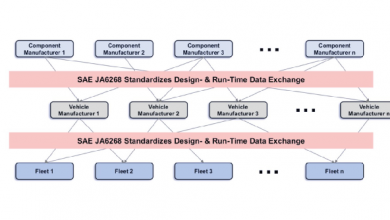Why tracking Engine Control Module (ECM) with GPS-inspired technology can be a total game-changer?

Understanding ECMs
Engine control module (ECM) is, unarguably, one of the most intelligent components of a modern car or a vehicle. In fact, your car runs on the ECM’s ability to process information. ECM, sometimes referred to as an engine control unit (ECU) or even a Powertrain control module (PCM), is the metaphorical “brain” of any engine. Its role is paramount in the collection, analysis, processing, and implementation of data received from engine subsystems or sensors. All of this is possible because of an embedded microchip—which processes inputs from various sensors and acts on them in real-time. ECM takes values from all the sensors and then decides what to do. These instructions get carried out and functions like ignition, braking, cruise control, steering can work in order. Simply put, ECMs act like mini computers and control how well the engine functions. In addition to keeping a check on engine performance and prime functionalities, an ECM is also responsible for issuing fault codes when something goes wrong. Using data available from sub-systems and sensors, an ECM knows everything there is to know about the engine.

Collecting Big Data from Automotive ECMs
Your engine is one of the most mysterious parts of your car. Even the most capable automotive engineers won’t really know what’s happening under your vehicle’s hood without data. This is why it is important to understand and inspect the wealth of information ECMs can provide. If you are a fleet business owner or a fleet manager, you should know that a fleet management software lives and breathes by diagnostic information provided by ECMs—available, or awaiting, to be spun into limitless profits. Fleet management software can extract fault codes or diagnostic trouble codes and update you with engine failures.
For instance, say your car’s engine temperature value is 105 F. Now, it is impossible to know if this value is ideal for your car’s engine or not. Should the driver stop and pay heed to this or keep driving? Sure, the check engine light on your vehicle’s dashboard is always a good indicator of any trouble in your engine—but is it enough? Critical engine temperatures mean overheating and can bring the fleet to a grinding halt. Or even worse, could hurt the passenger inside the car. Besides, these ranges are different for different car models. Here, telematics software could really help you. Get updates in real-time about any impending or existing engine issues and get them fixed preemptively to avoid expensive repairs.
Benefits of tracking your ECMs
If you’re simply guessing your engine health or even worse—if you aren’t keeping up with regular maintenance—then you need to stop immediately! Planning maintenance schedules that work best for your fleets cannot be done without real-time data. Therefore, with the help of telematics software, you can keep track of crucial parameters that affect your vehicle’s engine health. Aspects like engine oil temperature, coolant temperature, AdBlue levels, engine speed, DTC error codes, and more can be carefully monitored. You get unlimited access to valuable insights which can be translated into fruitful engine maintenance regimes. You’ll be able to improve your engine’s health and keep operational costs low! Perform data-driven analysis and get insights into engine problems like high coolant temperature or low engine oil. Along with this, you can also get access to organized data, like reports and charts. These visual analytics help you monitor the parameters of the engine that matter the most to your business. It will not only help you understand engine faults, but also help you get an insight into engine productivity.
References:
https://www.teletracnavman.com/resources/blog/engine-control-module
https://www.hindawi.com/journals/misy/2017/4395070/
Author:

Tushar Bhagat
Director
Uffizio India Pvt. Ltd.
He is the Technical Director for Uffizio India Software Consultants Pvt. Ltd. In this role he leads the company’s technical developments, overseeing a team of software developer and sales professionals and managing the annual spend.
Published in Telematics Wire


